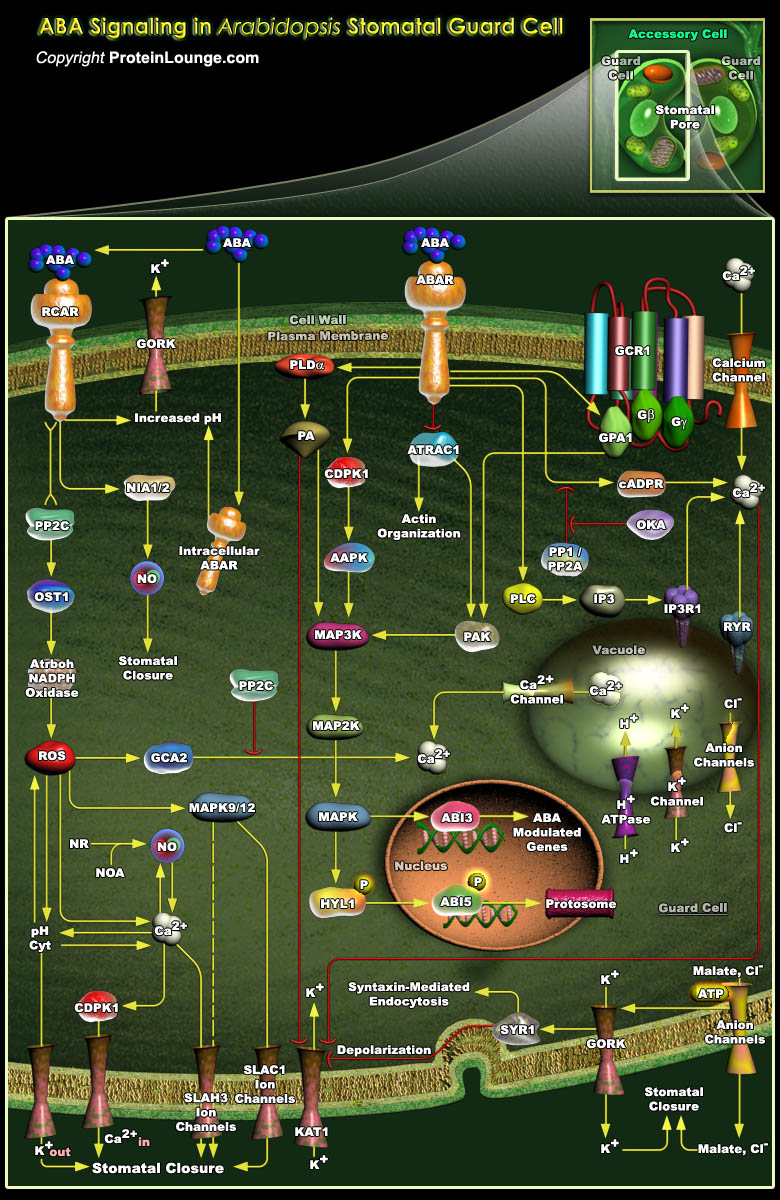
Plants have pores, Stomata, on their leaf surfaces that allow CO2 (Carbon Dioxide) in for photosynthesis and through which water evaporates. The specific cells that border and define these pores are Guard Cells. Guard Cells literally guard the size of the pore by alternately swelling, which opens the pore, or shrinking, which closes the pore. Plants must respond to a variety of environmental cues and regulate their Stomata accordingly so that enough CO2 gets in, but not so much water escapes that the plant dries out. This balance between opening and closure of Stomata is essential in determining a plant’s survival and how much it will grow and yield. The swelling and shrinking of Guard Cells occurs through the coordinated movement of water and Ions across the[..]
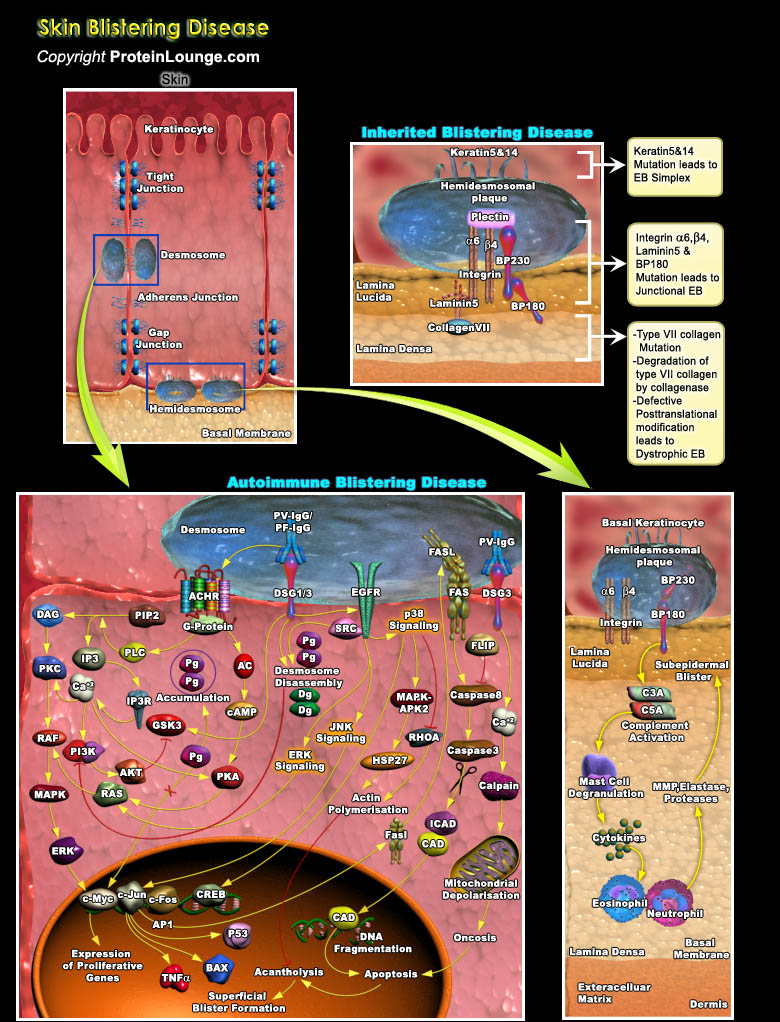
A blister (bulla) is a bubble of fluid that forms beneath a thin layer of dead skin. The fluid is a mixture of water and proteins that oozes from injured tissue. Blisters most commonly form in response to a specific injury, such as a burn or irritation, and usually involve only the topmost layers of skin. These blisters heal quickly, usually without leaving a scar. Blisters that develop as part of a systemic (bodywide) disease may start in the deeper layers of the skin and cover widespread areas. These blisters heal more slowly and may leave scars. Blistering disease is widely divided in to two catagories: Autoimmune blistering disease and inherited blistering disease. Autoimmune blistering diseases are a group of disorders in which the body mistakenly attacks healthy[..]
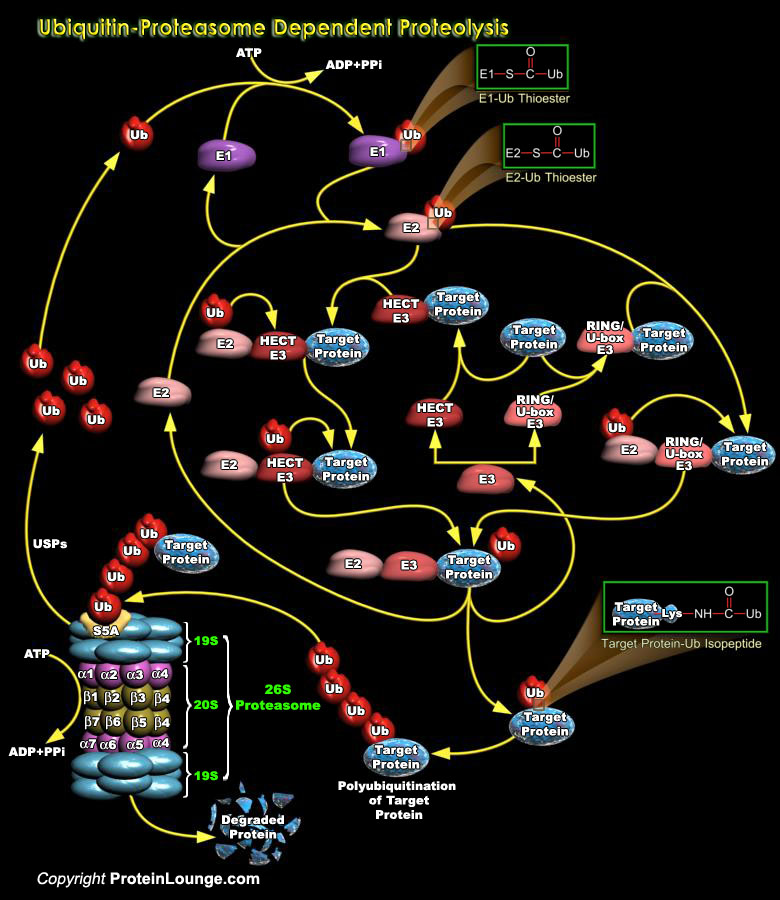
The Proper functioning of a cell requires careful control of the levels of important structural proteins, enzymes, and regulatory proteins. Protein molecules are continuously synthesised and degraded in all living organisms. The concentration of individual cellular proteins is determined by a balance between the rates of synthesis and degradation, which in turn are controlled by a series of regulated biochemical mechanisms. Differences in the rates of protein synthesis and breakdown result in cellular and tissue atrophy (loss of proteins from cells) and hypertrophy (increase in protein content of cells). Precise control of protein turnover is, therefore, essential to cellular survival. The only way that cells can reduce the excessive level of a particular protein is by[..]
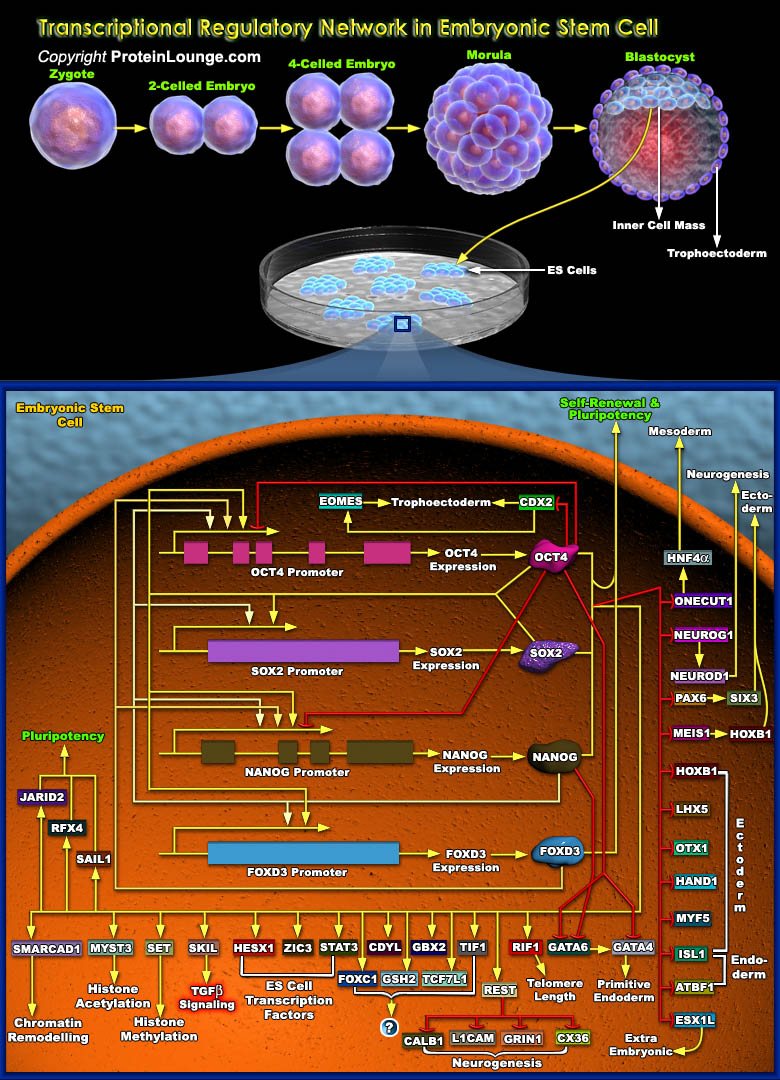
Stem Cells are undifferentiated cells that can give rise to several lineages of differentiated cell types. They are the founder cells for every organ, tissue and cell in the body. Stem cells are characterized by the ability to self-renew and maintain Pluripotency. These features allow Stem Cells to fulfill their multiple functions, namely to provide enough cells during organogenesis, to control tissue homeostasis and, in addition, to ensure regeneration and repair. ESCs (Embryonic Stem Cells) are derived from the ICM (Inner Cell Mass) of the developing Blastocysts, multicellular structures originating from four (Human) to five (Mouse) cleavages of fertilized oocytes. In Human, the fertilization of an Egg by a Sperm generates a Zygote that thirty hours later begins to[..]
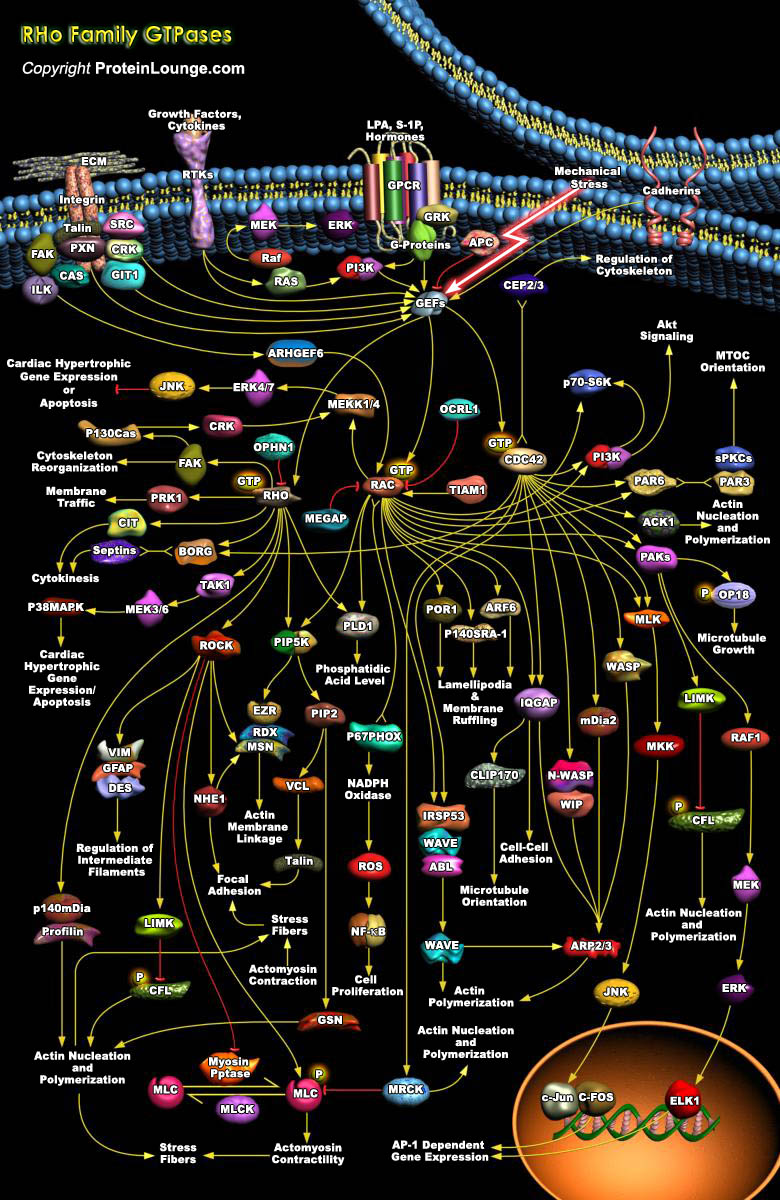
The Rho family of small GTP-binding proteins comprises a group of signaling molecules that are activated by a variety of Growth factors, Cytokines, Adhesion molecules, Hormones, Integrins, G-proteins and other biologically active substances and regulate a wide range of biological processes, including Reorganization of the Actin Cytoskeleton, Transcriptional Regulation, Vesicle Trafficking, Morphogenesis, Neutrophil activation, Phagocytosis and activation of the NADPH Oxidase, Mitogenesis, Apoptosis and Tumorigenesis. The mammalian Rho GTPase family currently consists of three subfamilies, Rho (RhoA, RhoB and RhoC), Rac (Rac1, Rac2 and Rac3) and CDC42 (Cell Division Cycle-42) (CDC42Hs and G25K). The best-characterized family members of Rho Family GTPase are RhoA, Rac1[..]
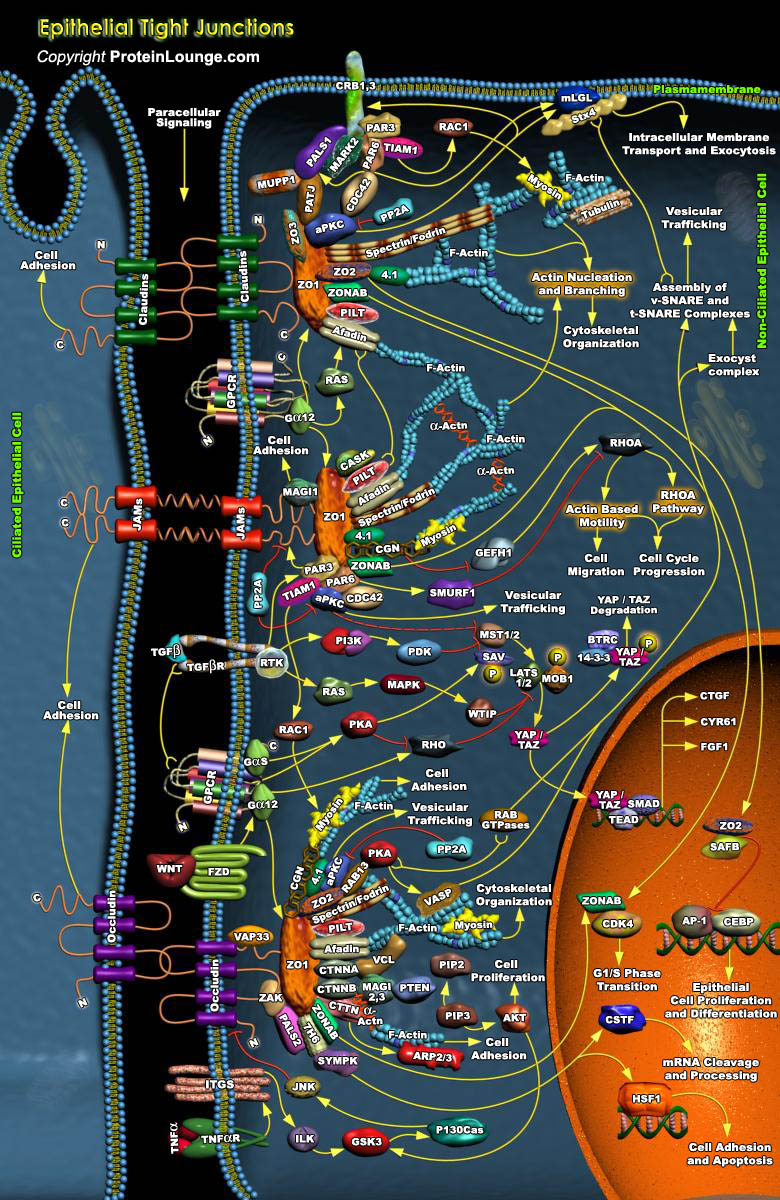
Epithelia in multicellular organisms constitute the frontier that separates the individual from the environment. Epithelia are sites of exchange as well as barriers, for the transit of ions and molecules from and into the organism. Epithelial cells achieve this by providing cellular borders that cover external and internal surfaces throughout the body. Complexes between adjacent cells include Gap Junctions, Desmosomes, Adherens Junctions (AJs) and Tight Junctions (TJs). Such junctions are quite essential for the modulation of paracellular permeability in various epithelia. Vertebrate epithelial cells exhibit Tight Junctions that lie apical to Adherens Junctions. Tight Junctions have an organizing role in epithelial polarization and establish an apico-lateral barrier to[..]
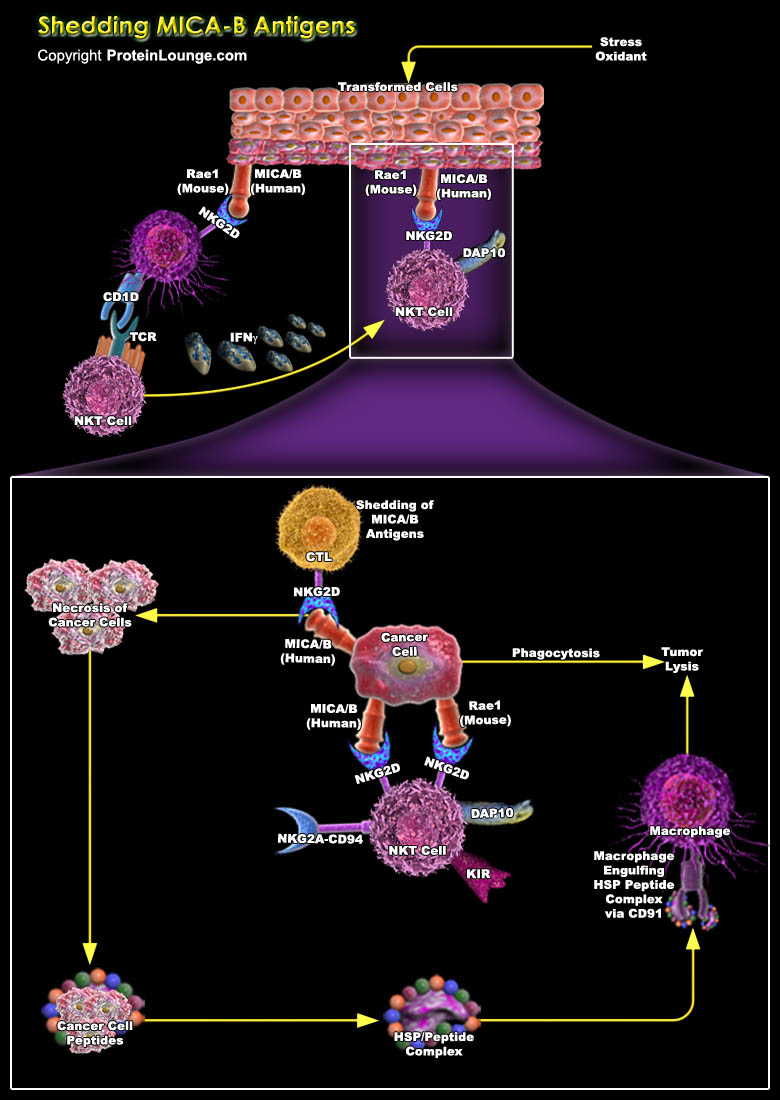
T cell responses against tumors require the recognition of specific peptides derived from tumor antigens in association with MIC (MHC Class I Molecules) by CD81 T cells expressing TCRs (T Cell Receptors). Such response generates intracellular antigen processing which are highly selective and binds only to some of the numerous polymorphic MHC class I molecules and often-impaired expression of MHC class I on tumor cells. Human gamma delta T cells are MICA (MHC-Class-Ipolypeptide-Related sequence-A) and MICB (MHC-Class-Ipolypeptide-Related sequence-B), which are distantly related to MHC class I but are functionally distinct. These molecules have no role in the presentation of intracellular peptide antigens instead MICA and MICB are closely related and functionally[..]
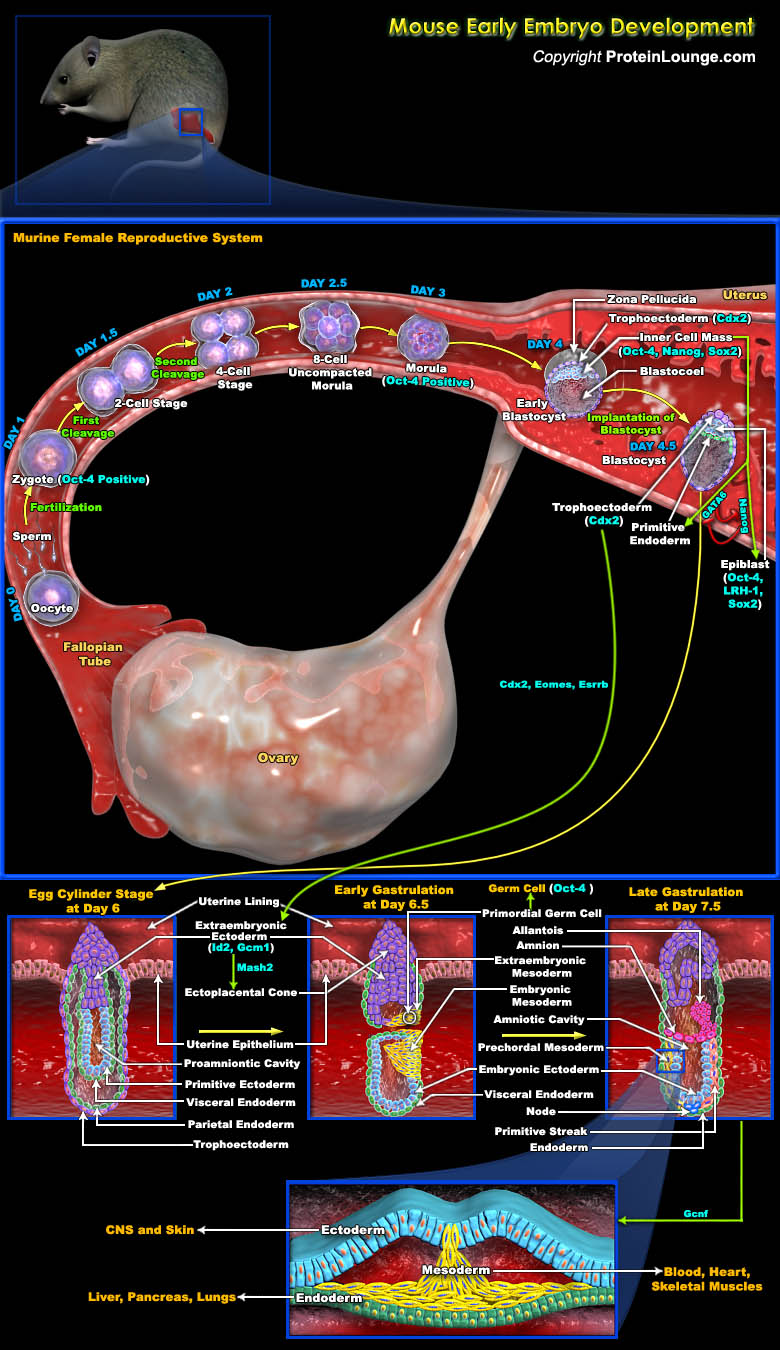
Embryonic development is the generation of a multicellular organism from a single cell. During this process, tissues and organs are differentiated and positioned at different parts of the organism. In animals, Embryonic development consists of 4 stages: Cleavage, Patterning, Differentiation and Growth. Mammalian Cleavage is strikingly different from most other patterns of Embryonic cell division. The mammalian oocyte is released from the ovary and swept by the fimbriae into the oviduct. The mature oocyte is surrounded by a protective coat of noncellular material (made of extracellular matrix and glycoproteins), called the Zona pellucida. Fertilization occurs in the ampulla of the oviduct, a region close to the ovary. For fertilization to occur, a haploid sperm cell[..]
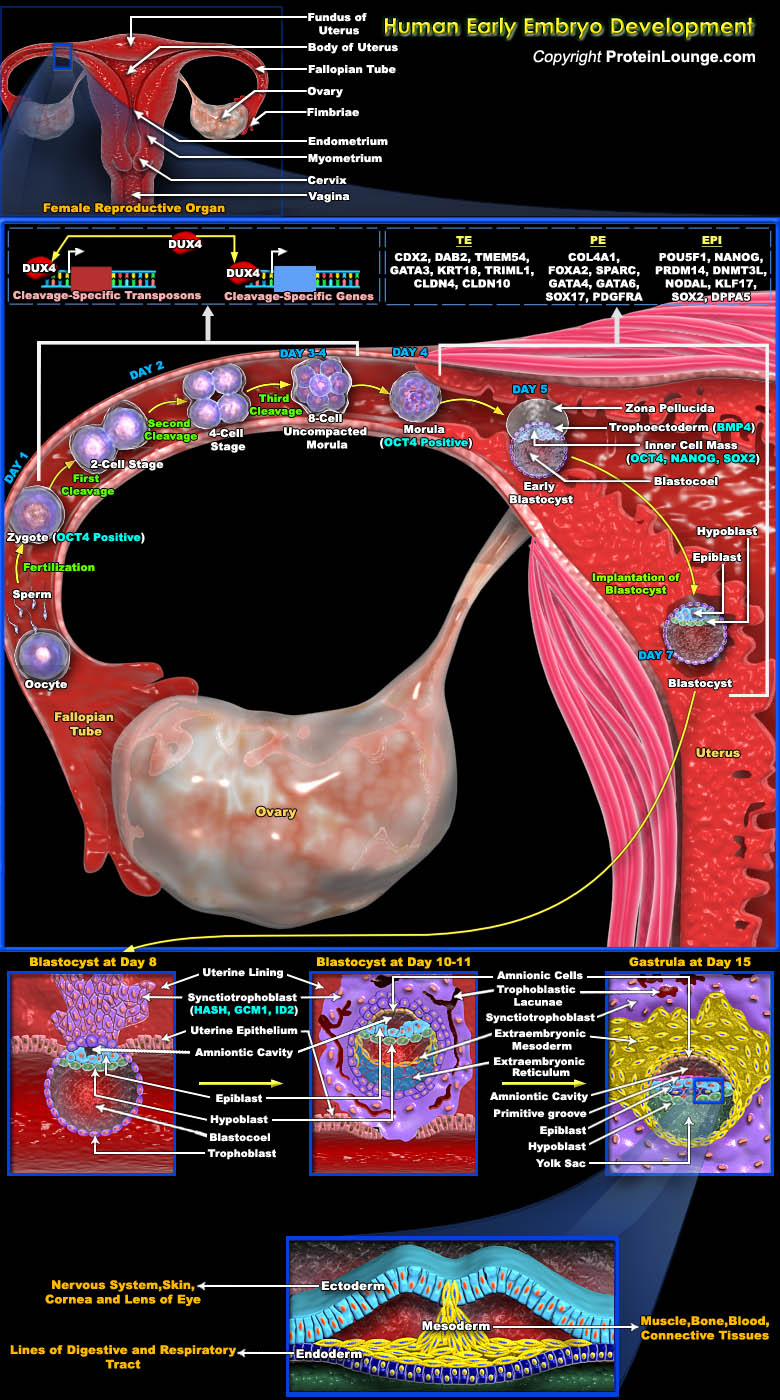
An Embryo is a multicellular diploid eukaryote in its earliest stage of development, from the time of first cell division until birth, hatching, or germination. In Humans, it is called an Embryo from the moment of Fertilization until the end of the 8th week of gestational age, whereafter it is instead called a Fetus. In organisms that reproduce sexually, once a Sperm fertilizes an Egg cell, the result is a cell called the Zygote. In animals, the development of the Zygote into an embryo proceeds through specific recognizable stages of Blastula, Gastrula, and Organogenesis. Little is known about the specific genes that regulate these early events or how interactions among cells or how cellular interactions with other factors in the three-dimensional environment of the[..]
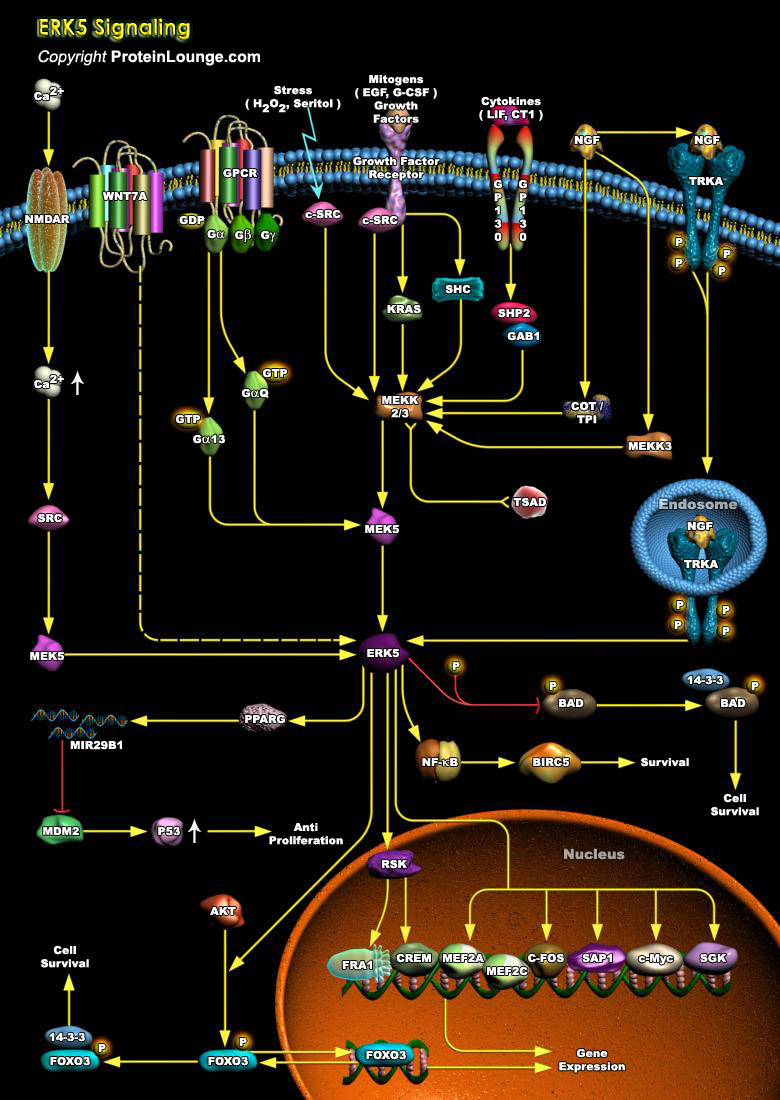
ERK5 (also known as the BMK1 (Big MAP Kinase-1)) is an atypical MAPK that can be activated in vivo by a variety of stimuli, including Serum, Growth factors including EGF (Epidermal Growth Factor), NGF (Nerve Growth Factor) and BDNF (Brain-Derived Neurotrophic Factor), GPCRs (G-Protein Coupled Receptors), Lysophosphatidic Acid, Neurotrophins and Phorbol ester and some Cellular stress such as Oxidative and Osmotic Shock. MAPK (Mitogen Activated Protein Kinase) cascades play important roles in many cellular processes including cell proliferation, differentiation, survival and apoptosis. They are also important for many physiological functions in several systems, including in developmental, immune and neuronal systems. At least 12 isoforms of MAPKs exist in mammalian[..]
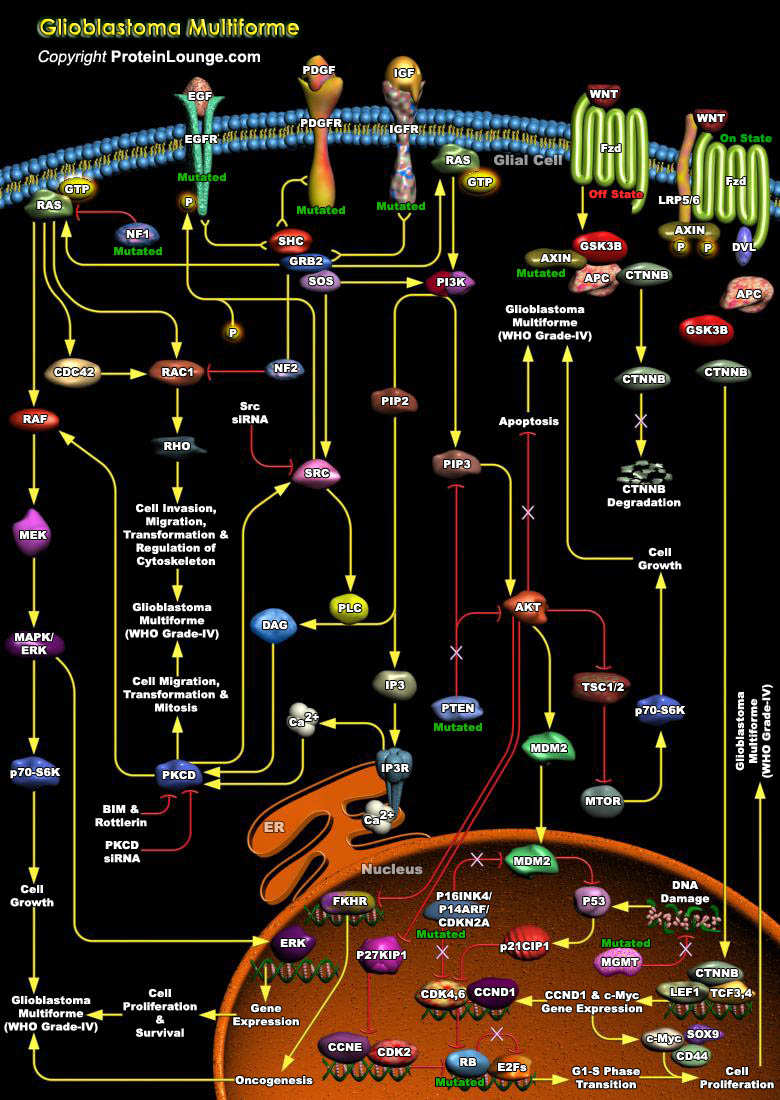
Glioblastoma Multiforme (GBM) is biologically aggressive neoplasms which have an elevated, often aberrant, proliferative capacity with a diffuse pattern of brain invasion. It is the most malignant Astrocytic tumor, composed of poorly differentiated neoplastic astrocytes. The World Health Organization (WHO) grading system classifies Gliomas into Grades I-IV based on the degree of malignancy, as determined by histopathological criteria. In the Central Nervous System (CNS), Grade-I Gliomas generally behave in a benign fashion and might even be circumscribed, whereas Grade-II, Grade-III and Grade-IV Gliomas are malignant and diffusely infiltrate throughout the brain. Glioblastoma Multiforme falls under the Grade-IV category. Glioblastoma Multiforme or the WHO Grade-IV[..]
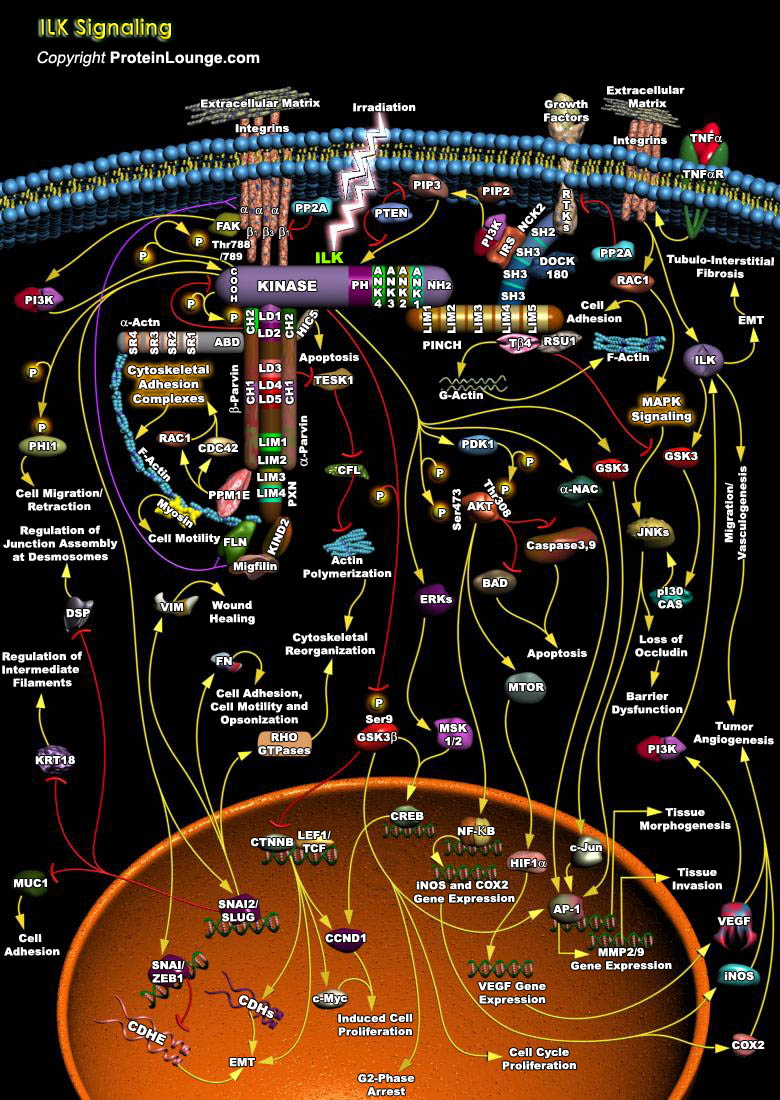
ILK(Integrin-linked kinase) is a key scaffold protein that localizes to focal adhesions, acts as a central component of a heterotrimer (the ILK–PINCH–parvin complex). Since its discovery, ILK has been demonstrated to have an essential role in connecting the cytoplasmic tail of β subunits of integrins to the actin cytoskeleton, and in regulating actin polymerization. Within this pivotal position, ILK has been shown to interact with many intracellular proteins through PINCH or parvin to mediate diverse arrays of biological events,or to mediate cell responses induced by the interaction of integrins with the ECM(extracellular matrix)(Ref.1). Several adaptor proteins with Actin binding properties interact with the C-terminus (COOH-terminus) of ILK.[..]

